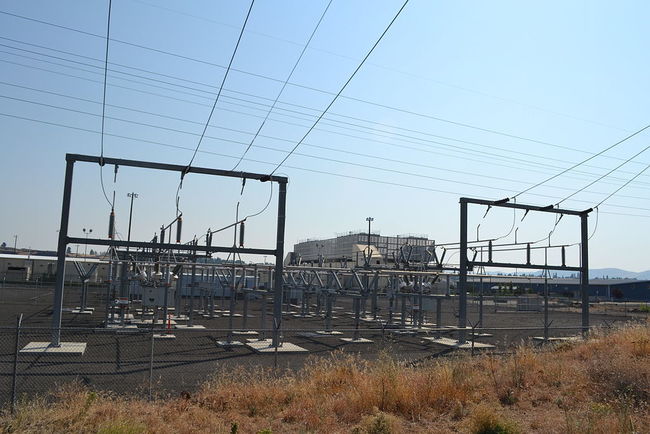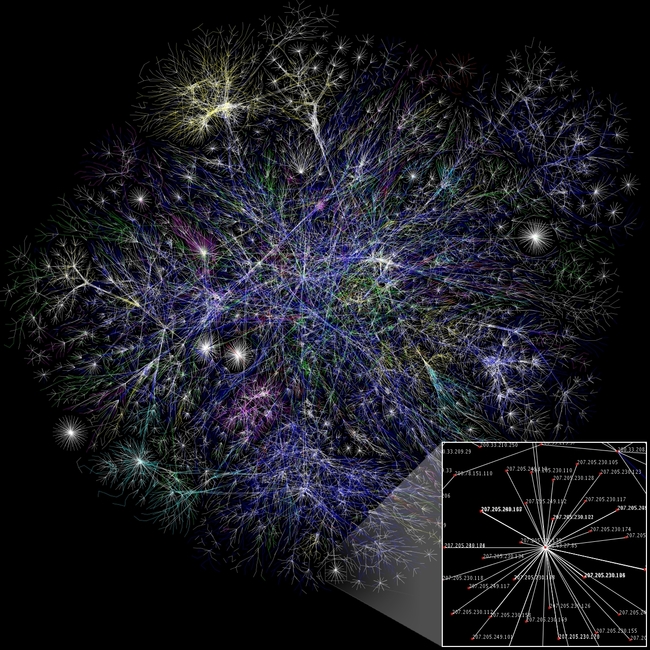21 – The planet-sized computer
What if, instead of simply building more computers, we use bitcoin as the economic lubricant to utilize the unused capacity in hundreds of millions of computers running on idle in homes, schools, offices and datacenters.
My first blog post, comparing 21. Inc’s first gen “bitcoin computer” to the Altair 8080—grandfather of the PC—gained unexpected attention.
I should thank @pmarca and @balajis for retweeting it.
Interested to see if they will retweet this. I suspect an unstated purpose of 21 is to build a planet-sized computer. The previous post was about baby steps, this is about endgame.
May 18 2015 #
…21 EXIT STEALTH: #
On the eve of 21.co—a secretive hundred million dollar Bitcoin startup— exiting stealth mode, the degenerate traders of the Bitcoin Whaleclub teamspeak server were discussing (mostly dissing) the 21 reveal. Failing to see any significance, repeating the things they heard on reddit:
“These guys are completely stupid.”
…
“They have to understand it will never work”
And so on. And so on. And so on. All this banal criticism tended to disregard the fact that the people building and investing in 21 have invented and built decent sized chunks of the modern internet.
They have some pretty smart cookies on board. So if I don’t get it, perhaps my first instinct should be to suspect that I could be missing something crucial, instead of asserting that they must be missing something obvious. While they may fail, it won’t be for being flat out stupid.
Case in point:
“I am copying Doug on this note to make an introduction … but trust me I will stay 100% engaged in this and be the godfather of it at Intel.”
—Brian Krzanich, Intel CEO
One might suspect that the CEO of Intel—given his response—knows something the public at large has (so far) been denied.
When the guys over at Andreessen Horowitz have weighed their time and priorities and found that 21 is the best use of some (or all) of their time, and a lot of their own money.
Well, it should suggest a rather grander vision than bitcoin mining toasters.
But what?
…Enter Thrive365 #
Thrive365 asked for voice privileges on “Whaleclub Teamspeak” to correct some misconceptions. He claimed to be working on the project.
He claimed to be an engineer working on 21’s embedded computing chip. He sounded annoyed at Whaleclub’s mockery.
None of us especially like to be portrayed as morons in public. It stings.
So Thrive did this little impromptu Q&A.
Virtualized symmetric multiprocessing! ESX! Technobabble! Woo!
The Q&A wasn’t decisively informative, but it sure got me thinking…
Imagine a global virtualized hypercomputer with on-the-fly negotiable capacity, participating nodes being rewarded with Bitcoins for being part of that virtual computer.
What if there was some way to build a singular massively distributed global scale computing platform to blow Amazon’s EC2 out of the water.
For free. Using donated parts, owned by someone else.
A global scale cloud computing cluster using excess capacity sourced from existing, net-connected, consumer grade, consumer owned hardware.
USE BITCOIN TO TURN all internet connected hardware into one unified machine. Make THE INTERNET one big, planet sized computer.
Yeah, uh, I got a little carried away there maybe.
“YOU ARE ONLY USING 10% of your… #
…would you like some Bitcoin?” #
There are billions of computers in the world today, and we are putting millions more online every single day. But how much of these giant pools of internet-connected computing resources:
- Compute
- Storage
- Bandwidth
- Memory
…are idle—just going to waste, generating heat—at any particular time?
It’s a real heck of a lot.
And what are those internet-connected computing resources worth?
(If only there was some way to unlock them.)
…bigger than Google: #
Balaji has said, “Bitcoin is bigger than Google.” i.e. if Google Inc. pointed 100% of their computing resources at Bitcoin mining, they’d have 1% of the network. And at the time, nobody could understand what he was on about.
Google datacenters are general purpose computing hardware.
SHA-256 miners only do one thing. So where’s the connection?
It has been said, and often repeated: You’re only using 10% of your brain.
Not true. But billions of your neurons are idling at any particular time. Doing nothing in particular. Running NOPs. Or waiting for Halle Berry to walk by.
To force the analogy here; What if 21 could unlock the metaphorical (or actual) 90% of computing resources that are being wasted, and put a good fraction to some productive use.
Bitcoin provides the economic incentive to gainfully employ those idle resources. You could be rewarded with satoshis by the second, or millibits by the minute. For letting 21 borrow your hardware and renting it out.
…Google vs hardware cost: #
One of the more important clever things Google did when starting out was:
Using consumer hardware. Instead of crazy expensive server hardware.
Normal consumer HDDS, farms of normal PCs to crawl the web.
Bringing costs down made it cheaper to outgrow the competition.
This strategy required a number of hacks to get around the reduced quality, reliability and availability of consumer hardware exposed to enterprise loads, but in sum, it was a win. Brilliant and seemingly obvious in retrospect.
Perhaps this feat can be repeated. Perhaps Google could hire a part of 21’s big computer in the sky to run MapReduce or other distributed algorithms.
One would be limited to embarrassingly parallel problems. But fortunately, many important problems are embarrassingly parallel. (Just name any distributed computing project you care to think about.)
State of the art Google datacenter:

State of the art future datacenter: (Yes, a picture of the Internet.)
…but! But! This is science fiction! This is… Crazy! #
Is this sci-fi? Yes. Is it crazy? Yes.
Is it forbidden-by-thermodynamics crazy? No.
It’s weird and awesome crazy like iPhones from 1960s Star Trek. Like Douglas Adams 1970s version of Wikipedia from The Hitchhiker’s Guide to the Galaxy. Like planetary credits from 1980s Cypherpunk fiction.
But there are actual iPhones and Wikipedia and Bitcoin now.
There aren't—AFAICT—Star Destroyers or hand held laser pistols.
Not being forbidden by thermodynamics turns out to be kinda important.
Oh, and there aren’t any vacation colonies on the moon either.
(Not being forbidden by basic economics is also important.)
This is a crazy and non-obvious use of Bitcoin.
Is it forbidden-by-basic-economics crazy?
That’s the test and we’ll just have to see.
So now you can agree to throw those spare compute resources at protein folding or running fast fourier transforms on incoming chunks of data or… other appropriate research and business problems.
Run up daddy’s power bill for fun and profit.
Your computing resources will be auctioned off to the highest bidder. Turning your machine (PC, server, laptop, router, fridge) into a part-time node in a global virtual supercomputer.
Pimp out your hardware to Amazon, so they don’t have to build that new expensive datacenter. Let them use your home computer. Open the window, and… *poof* There goes all the cooling costs.
…System Idle Process: 94% #
…Network utilization: 0.24% #
…5.28 TB free of 6.0 TB available. #
Today’s computers are the stuff of yesterday’s science fiction.
Most of them doing nothing, most of the time. What a waste.
If you happen to be on a Windows machine:
- Press Ctrl+Alt+Delete.
- Go to task manager.
- Show processes from all users.
- Sort by CPU time.
At the top… you’ll find “System idle process.”, likely at 80–90%
On Linux/Mac, use https://en.wikipedia.org/wiki/Top_(software), for example.
Hey! Is that 90% of your CPU time going to waste?
Oh no! Think of the environment!
How much of your available bandwidth are you using right now?
Less than 10%? Less than 1%?
Most of your processors are running idle the majority of the time.
Most of your available bandwidth is unused.
One could bring millions, billions of computers to bear on problems, by letting them work in their spare time. Using idle CPU cycles.
Because you can reimburse the worker nodes in BTC.
Current distributed computing projects don’t reward contributors with money, only because they can’t. With this, you can.
From the set of all possible hypotheses, describing all possible worlds that fit the available evidence, which hypotheses are more likely to be true, given what we know?
Building an “internet-sized computer” isn’t the one hypothesis that fits the evidence… …but it knocks “mining in toasters” out of the park.
(And, see: The Vijay Pande connection, below.)
…so 21 is secretly building SKYNET? #
21 Inc. is not simply about putting chips in people’s hardware to make money off of mining.
Well, perhaps then, 21 has been hoarding Bitcoins to… Pay you in exchange for renting out your general (not application specific) computing hardware in exchange for BTC.
And that’s why they’re working towards putting Bitcoin hardware wallets and SHA-256 miners in routers and SoC silicon and everything.
21 Inc. has already mined > 65K BTC, according to year-old data.
For themselves? Or… to pay the nodes of Skynet.
…Sidechains and micropayments #
This one is obvious. No Skynet on the mainchain. Not with 1MB blocks.
We handwave this away by invoking lightning and payment channels. ;)
–> Enter lightning networks.
–> Enter micropayment channels.
…encrypt everything: #
Every work unit delivered by 21/Skynet would need strong, uncompromized, encryption. Which imbues the recent “Golden Key” encryption backdoor debate with new importance.
…homomorphic encryption for business secrets: #
I haven’t figured this one out. :)
…getting grandma to use Bitcoin. #
With SoC integration (Intel, Qualcomm) and hardware wallets grandma will be using Bitcoin, if she buys the latest laptop. This is 21’s “Phase #3”, so perhaps a five years to a decade out?
…think bigger: #
21’s gameplan is a multi year, likely a multi decade play. Endgame:
In twenty years, grid-connected computers are part of THE COMPUTER.
Re: Thrive 365’s comment on Tesla/Powerwall future citywide storage and excess electricity. #
21’s “Skynet” could profitably use any excess power from a future (regional?) power glut. To run the internet-sized computer. Powered by Bitcoin.
Bitcoin miners in toasters is obviously not the gameplan, or the endgame, it’s either a ridiculous distraction or about managing expectations.
Q&A via Reddit: #
Q:
I had to stop reading here. If you think that 90% of the CPU time is generating heat and going to waste through “System Idle Process”, and that filling it up with work so that “System Idle Process” is at 0% will generate the same amount of heat and use the same amount of power draw… well, I don’t know what to tell you.
A: Of course! It’s not going to be that simple.
…power difference trade-offs: #
21 wouldn’t be paying for idle power consumption, only the extra power drain. The difference. And yeah, running full throttle is going to be unacceptable almost everywhere. But perhaps throttling up 10%, finding the sweet spot where you don’t have to activate fans… is fine. Even at the office. Even in the living room.
And of course, “worker drones” could tune the network’s utilization of their equipment to their preference.
Think +10% utilization is plausible? Well, how about +1%?
That is: Going from 10% CPU to 11% CPU utilization.
Now, what would that mean?
…a mere doubling: #
If current utilization of internet connected compute resources is around 10%, and you increase it by 1%…
That sounds like failure. Boo! Failure bad! Err…. Nope! You’ve increased the effective compute power of the entirety of civilization, by ~10%.
If Skynet increases utilization of compute resources from 10% to 20%,
you’ve doubled the effective compute power of humanity.
There will be tons of subtle and hard to solve and important details, problems for which solutions have to be engineered. Like with any startup.
If - if - if the particular problems don’t add up to a deal-breaker.
It’s only because the upside is so unusually huge.
…the dream: #
The dream for Skynet clients is Higher Op-Ex, zero Cap-Ex.
No need for staff on site, 24/7. Your hardware is free & massively redundant, and gets replaced every 2-3 years, by the actual owners.
No hardware cost. No maintainance cost.
Gives you some wiggle room for those operational expenses, doesn’t it?
So, the total cost of ownership will, over time, move towards to the difference in power draw, paid in Bitcoin. R&D costs will be large at first. But in the long term, these expenses will be vanishing, when weighed against the computational output of civilization.
After you deal with all the unfortunate trade-offs you should still be left with one of the biggest—maybe the biggest—most audacious tech-businesses ever. And a giant internet-sized computer.
Yes, it’s a crazy idea, but not “forbidden by thermodynamics” crazy.
Q: Why would Google want to give out copies of their ultra-confidential data to random people?
A: They wouldn’t. Not for confidential data anyway. “Skynet” would not be a fully general computing platform, even running on fully general hardware. But there’s a large class of problems such a platform would be suitable for.
And not-so-coincidentally, a16z have hired world leading experts in the sort of distributed computing it would be suitable for.
Guessing they’re looking at bio-medical research. For a start.
Conveniently, Balaji and Vijay’s home turf.
Think Folding@Home. Multiplied by orders of magnitude.
Vijay? Vijay who? #
…the Vijay Pande connection #
In 2013, 21 CEO Balaji Srinivasan taught Stanford’s Startup Engineering massive open online course with… with… With Vijay Pande, that’s who.
Vijay S. Pande is a professor of chemistry, structural biology, and computer science (by courtesy) at Stanford University, the director of Stanford’s Biophysics Program, and the founder of Folding@Home. The project integrates volunteered computers and PlayStations to perform simulations of protein folding for disease research, and is the Guinness record holder for “most powerful distributed computing network”.
The most powerful distributed computing network in the world.
Until Bitcoin arrived on the scene.
Folding@home is developed and operated by the Pande Laboratory at Stanford University, under the direction of Prof. Vijay Pande, and is shared by various scientific institutions and research laboratories across the world.[1]
The project has pioneered the use of GPUs, PlayStation 3s, Message Passing Interface (used for computing on multi-core processors), as well as some Sony Xperia smartphones for distributed computing and scientific research.The project uses statistical simulation methodology that is a paradigm shift from traditional computational approaches.[5] As part of the client-server network architecture, the volunteered machines each receive pieces of a simulation (work units), complete them, and return them to the project’s database servers where the units are compiled into an overall simulation. Volunteers can track their contributions on the Folding@home website, which makes volunteers’ participation competitive and encourages long-term involvement.
Folding@home is one of the world’s fastest computing systems, with a speed of approximately 40 petaFLOPS:[6] greater than all projects running on the BOINC distributed computing platform combined. This performance from its large-scale computing network has allowed researchers to run computationally expensive atomic-level simulations of protein folding thousands of times longer than previously achieved. Since its launch on October 1, 2000, the Pande Lab has produced 118 scientific research papers as a direct result of Folding@home.[7] Results from the project’s simulations agree favorably with experiments.[8][9][10]
—https://en.wikipedia.org/wiki/Folding@home
…Folding@Home: #
Folding@home had people on the internet donate their PCs and Playstations to protein folding, in exchange for warm fuzzies. Which was effective for a bit, but after a while, the novelty wore off and people turned off their machines.
Bitcoin didn’t have that problem. For six years and counting, people have been throwing more and more and more hardware and power at Bitcoin.
People are worried China is going to run out of coal if this continues.
Because Bitcoin pays.
Previous distributed computing projects have suffered from being reliant on volunteers and hobbyists. Anyone who has worked on these kinds of project must have been grasping for some way—any way—to incentivise participation.
Millions of users tried F@H for novelty but few stuck around for longer than a few weeks. What if 21 Inc. found some way to fix this?
What if they found some way to make distributed computing pay.
(Satoshi Nakamoto found a way to make distributed computing pay.)
Hodling@home, computing in the cloud.
Well, guess what… Vijay is currently working for Andreessen Horowitz / a16z.
VC (@a16z), Professor (@Stanford), and entrepreneur (@Globavir, @Schrodinger, @Counsyl) –– https://www.linkedin.com/pub/vijay-pande/2/334/4b5
Since when? Since 2015? Nope, 2014!
Prediction: Pande is unofficially advising (or directly working on) the 21 project for A16Z.
Oh, and that firm, @Counsyl. Just happens to be Balaji’s genetics firm.
And so perhaps this is why Balaji joined a16z in the first place.
To monetize distributed computing.
“Of all the gin joints in all the towns in all the world”, Vijay S. Pande just happened to walk into Andreessen Horowitz. And for what?
Podcast: a16z Podcast: Startups as Science Experiments — Can VC Disrupt Academia, and Vice Versa?
Professor Vijay Pande of Stanford University is joining us as the first Andreessen Horowitz Distinguished Visiting Professor of Computer Science, (…)
—Pande:
For example, I’m the faculty manager of the Stanford Bitcoin Group, and that’s a great example of very motivated, smart, entrepreneurial undergrads.
—Pande:
The impact of MOOCs is in reaching this “dark talent”. People talk about “dark fiber” or “dark energy”, but there is a huge market of “dark talent” [to use a term Balaji coined] in places like rural India, China, and all over the world. A billion programmers. Being able to reach that dark talent, and giving them tools to create, could be hugely transformative.
—Pande:
That’s one of the reasons Balaji is so interested in bitcoin for the MOOC. According to him, bitcoin + computer + MOOC allows people to really do amazing things, with minimal resources, and make a real business. Or even just make an iPhone app. We mock app innovation, but you could make $100K a year on a good app, and for someone living in a hut in India, that’s dramatically life-changing. It also uplifts those around them, whether through money or education or quality of life or helping others.
—Pande:
That’s what’s really unique about this time in I.T. right now: Because of the cloud, you don’t have to construct this huge backend. You don’t need to buy any infrastructure. The ability to jumpstart from nothing then focuses more on the quality of your ideas and your ability to do good work.
I can’t think of a time like this before, ever. In the industrial revolution, nobody got to build their own machines out of nothing…





